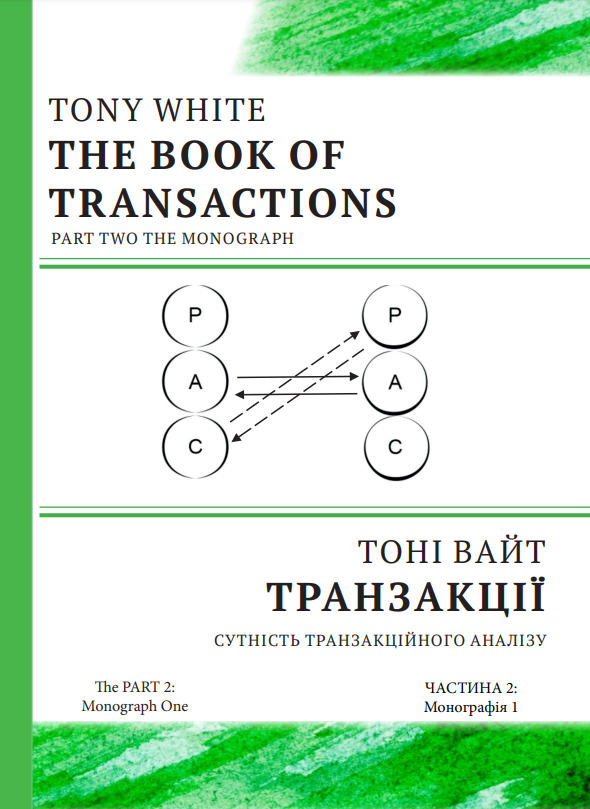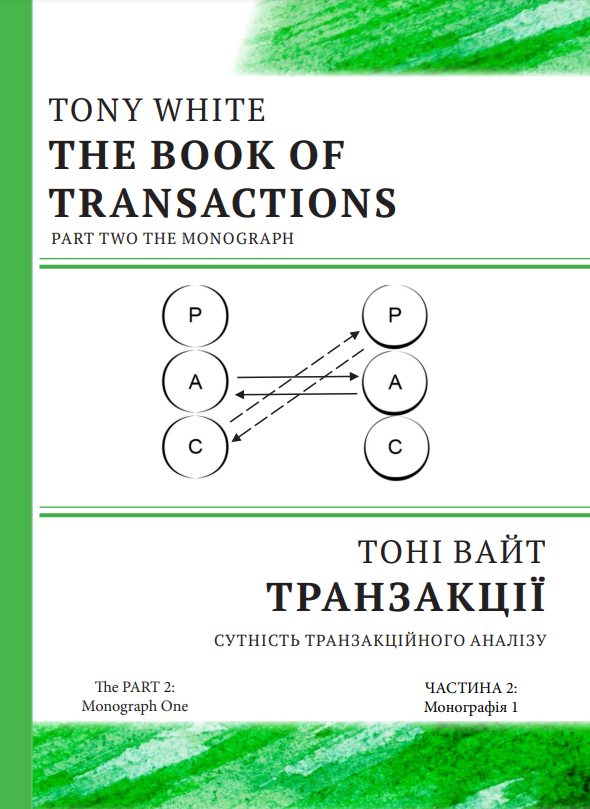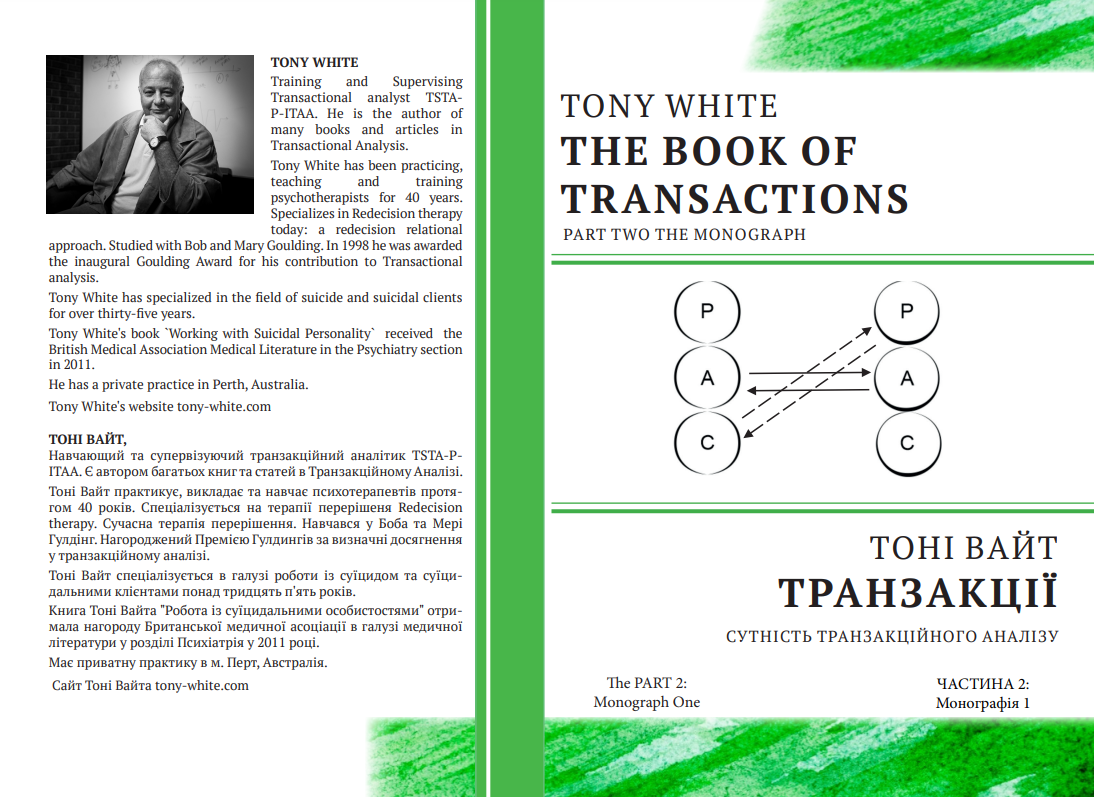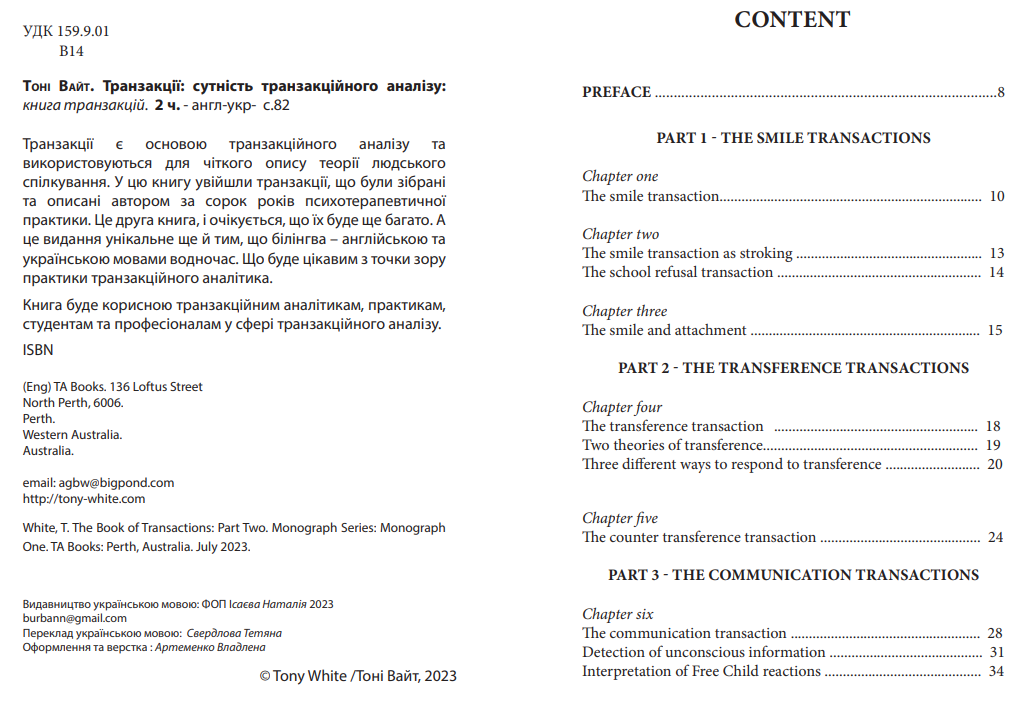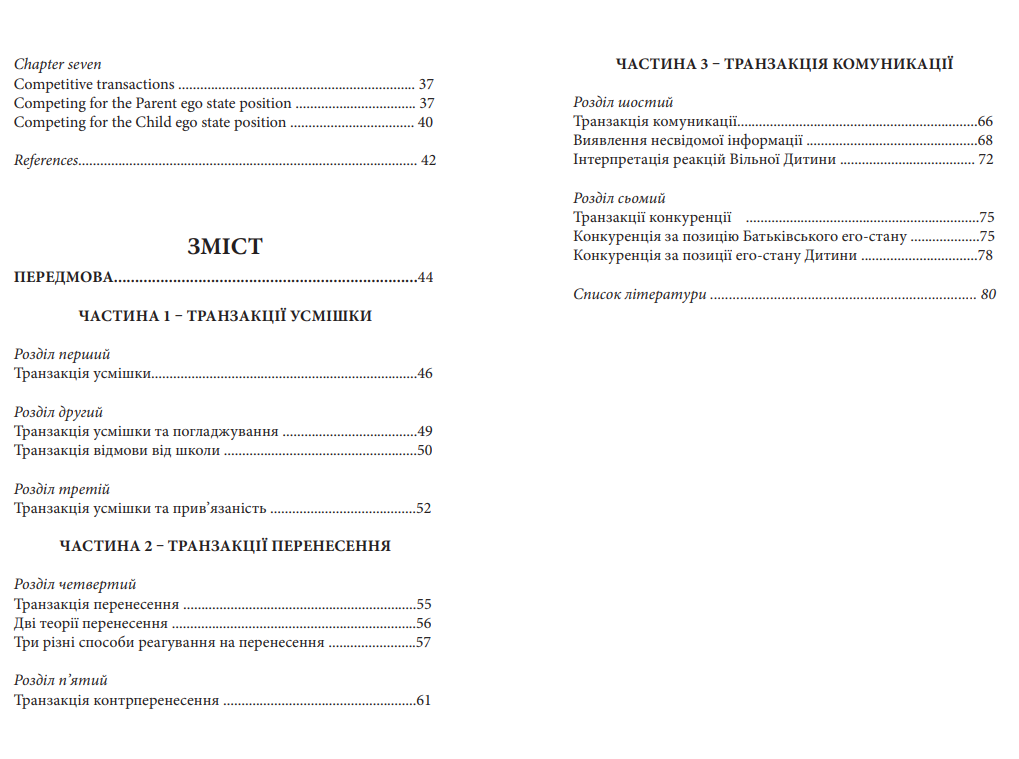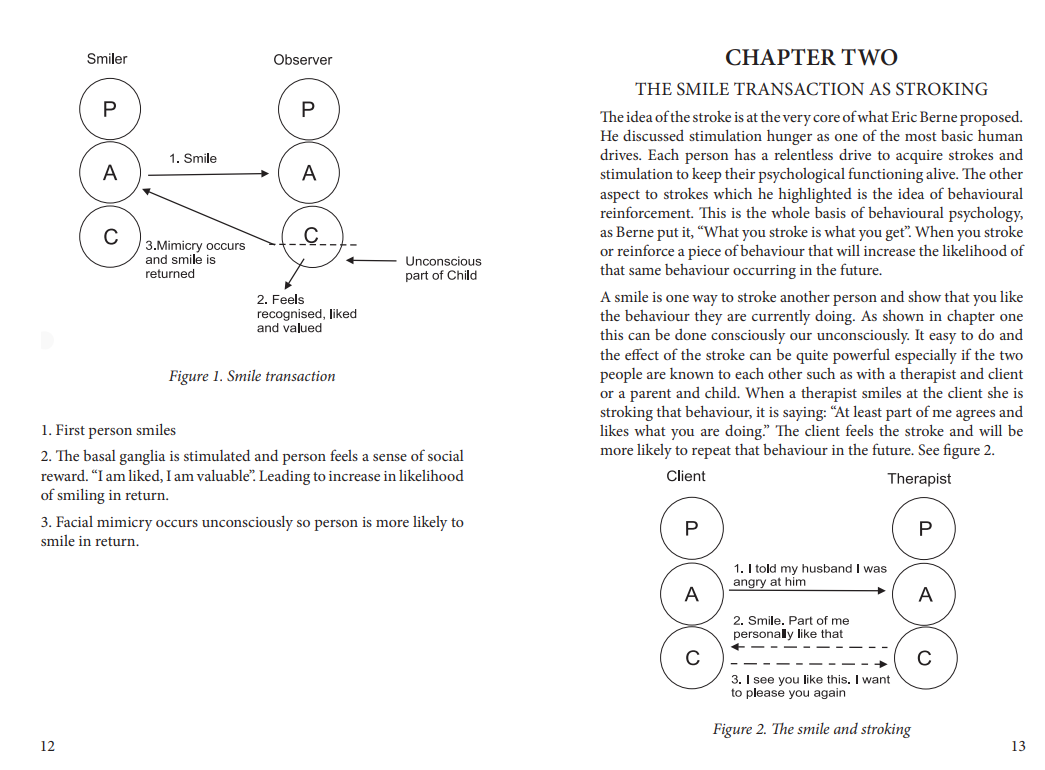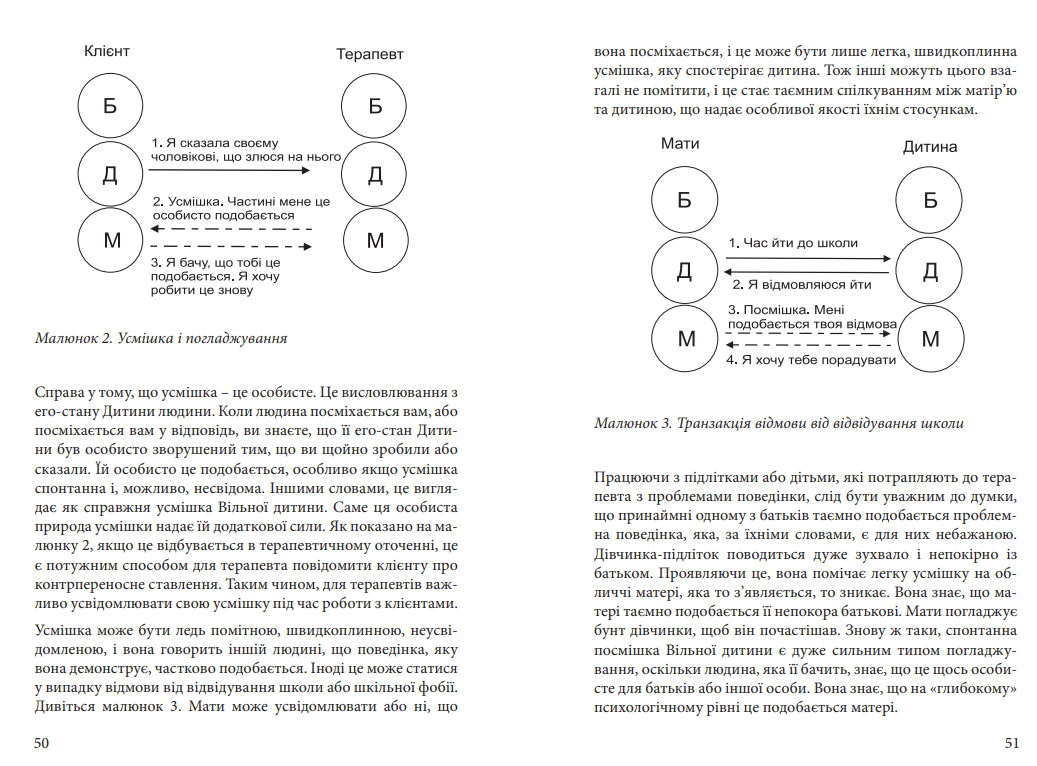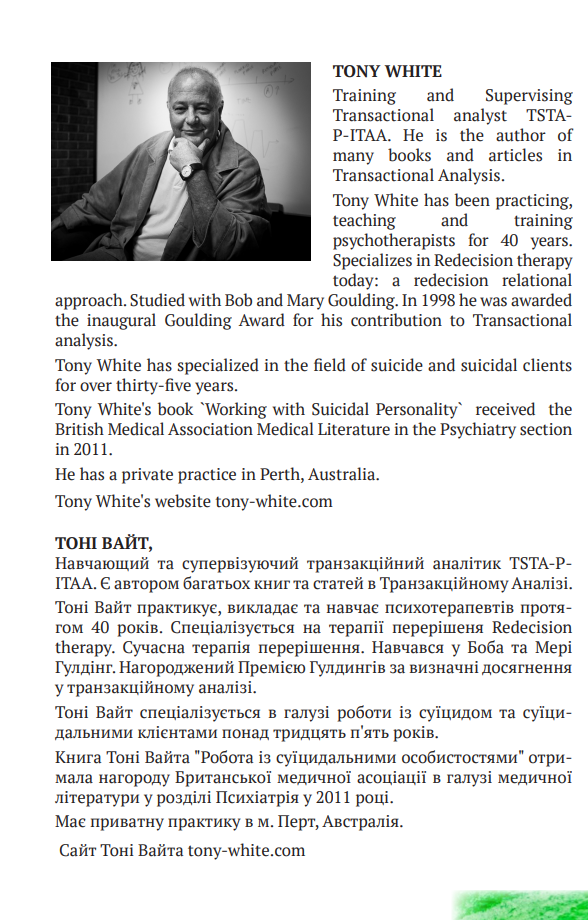|
Количество
|
Стоимость
|
||
|
|
|||
Тони Вайт "Транзакции. Суть транзактного анализа" Серия монографий. Часть 1.
Tony White "The Book of Transactions. Part two." The Monograph Series: Monograph Two.
Английский- Украинский - 82 с.
ЭЛЕКТРОННУЮ ВЕРСИЮ КНИГИ МОЖНО ПРИОБРЕСТИ НА AMAZON.
УДК 159.9.01
ISBN 978-617-7836-42-0
COPYRIGHT ©ANTHONY GILBERT BROWNING WHITE
This document is available at Amazon. You may copy what you want and distribute it as you wish. When you do, please acknowledge the source:
Tony White `The Book of Transactions: Part Two. MonographSeries: Monograph Two` TA Books: Perth Australia. July 2023.
Эта книга на английском языке доступна на Amazon. Вы можете копировать то, что хотите и распространять. Когда вы будете это делать, пожалуйста, ссылайтесь на источник: Тони Вайт. Книга транзакций: Часть вторая. Серия монографий: Монография первая. TA Books: Перт, Австралия, Июль 2023 года.
Права на перевод и издание на украинский язык: ФОП Исаева Наталия burbann@gmail.com
Перевод на украинский язык: Свердлова Тетьяна
Оформление и верстка: Артеменко Владлена
Издательство "Деонис" 2023, Киев
CONTENT
PREFACE
PART 1 - THE SMILE TRANSACTIONS
Chapter one The smile transaction
Chapter two The smile transaction as stroking
The school refusal transaction
Chapter three The smile and attachment
PART 2 - THE TRANSFERENCE TRANSACTIONS
Chapter four The transference transaction
Two theories of transference
Three different ways to respond to transference
Chapter five The counter transference transaction
PART 3 - THE COMMUNICATION TRANSACTIONS
Chapter six The communication transaction
Detection of unconscious information
Interpretation of Free Child reactions
Chapter seven Competitive transactions
Competing for the Parent ego state position
Competing for the Child ego state position
References
PREFACE
Dear transactional analysts, students, practitioners and professionals.
This book is the second one in a series of planned monographs about transactions and all the different forms in which they can come. As I mentioned in book one the purposes of this is to get many of these transactions out and described and discussed so they are not just one day forgotten.
Here we have a combination of some transactions that have been described before and some that have not been mentioned before. Part two of this book is on the transference and counter transference transactions. Eric Berne has clearly discussed these two types of transactions in the books that he has written and I discuss them here. However I also discuss material that he or any other transactional analyst to my knowledge have not mentioned before, or only mentioned briefly. For example the two theories of transference and the two theories of counter transference. The implications for transactional analysis are discussed in these two theories. This is followed by a description of how classical TA, relational TA and redecision TA all work with transference differently. Then in chapters five and six I take a look at counter transference and highlight how what is often seen as counter transference in many cases is not actually that. Many therapists and supervisors probably misdiagnose the therapist’s reactions to a client as counter transferential when it maybe just natural mirroring of the client or just here and now Free Child reactions to a client.
Also at the start of this book I examine the smile transaction. This has been talked about before with the gallows transaction smile but I take a much deeper look at how a smile influences the transactions between two people. When people smile at each other what is that communicating in the transaction. As is shown the smile transaction can be quite complex with a lot of psychological dynamics going on between the two people. Finally we have the competitive transactions. Sometimes people compete with others for all sort of different things and motives. How do you draw this as a transaction. For example some people compete for the Child position in the relationship and others compete for the Parent position. This can be assisted by the game of sulk or by people doing ’no speaks’ with others where they stop speaking to the other person as a form of punishment.
Thanks must go to Nataliia Isaieva for support and inspiration. Also, thanks to Tatyana Sverdlova for her always excellent translations. Thanks to Vladlena Artemenko for designing the book and to all who being the driving force behind these books being published in two languages.
Tony White Transactional Analyst
Perth, Australia July, 2023

